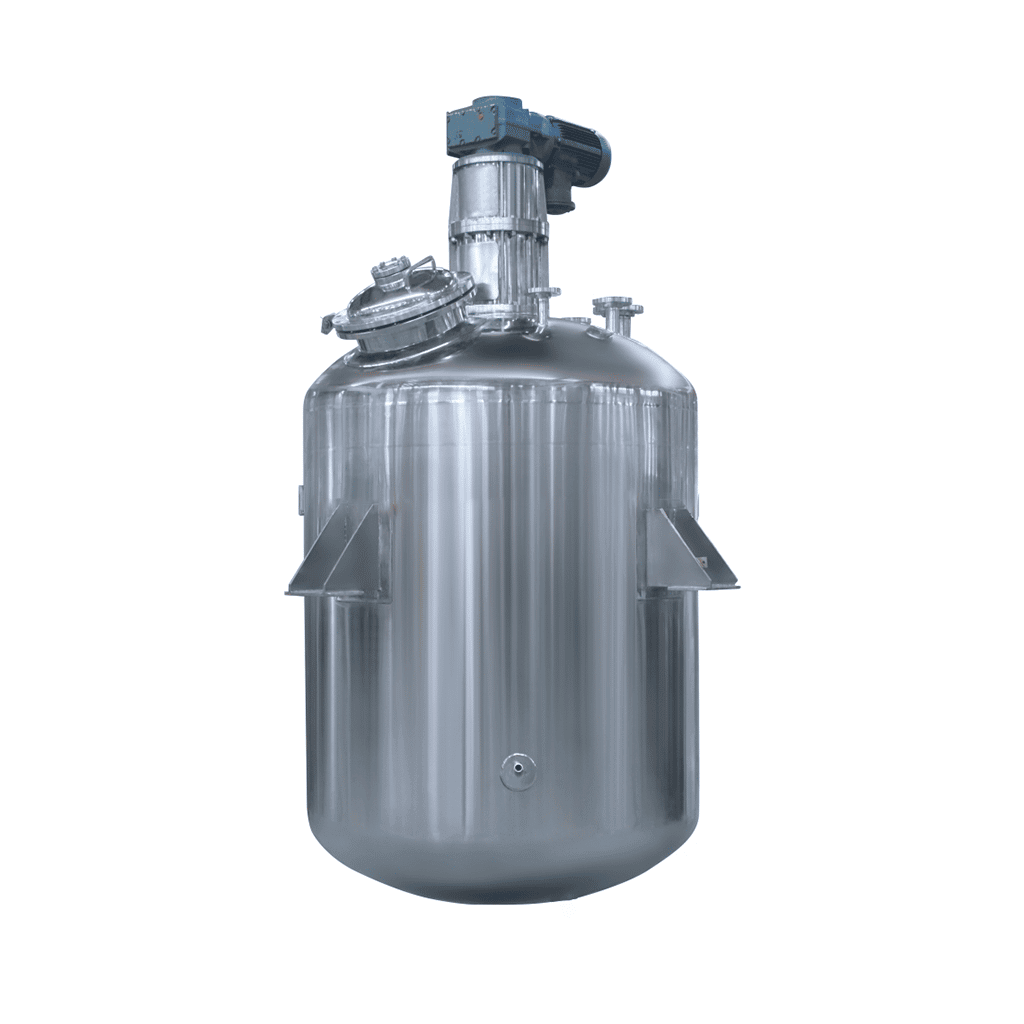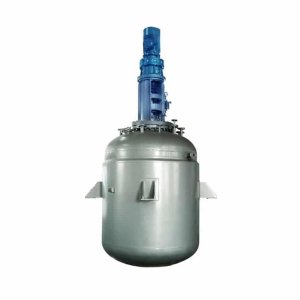
-24-1.jpg)
Stainless Steel Reactor
Stainless Steel Reactor: used in dairy products, sugar, beverages, and other fields
Material
stainless steel (316, 304)
Capacity (L)
10-10000+
Mixing system
anchor, paddle, frame and others
Heating system
electric heating, oil heating and others
A stainless steel reactor is a stainless steel container equipment. The stainless steel reactor consists of a kettle body, a kettle lid, a stirrer, a jacket, a bracket, a transmission device, a shaft seal device, etc. Materials and openings can be made according to user needs and process requirements. Stainless steel reactors are mainly used for stirring, homogenizing, and mixing storage of dairy products, sugar, beverages, food, and various pharmaceuticals.
Request a quoteWhen used, the stainless steel reactor is a pressure vessel with sealed forced convection internal circulation heating. Its performance is widely used in chemical production, especially the production of fine chemicals such as pesticides and pharmaceuticals. During use, accidents caused by static electricity have occurred in fine chemical production companies. Static electricity can easily cause explosions and fires, and can easily cause electric shock hazards, affect production, and damage stainless steel reactors. However, due to the structural characteristics of stainless steel reactors, it is difficult to eliminate static electricity, so preventing static electricity is the focus of its research.

Causes of static electricity in stainless steel reactors
1. In chemical production, flammable and explosive organic solvents such as toluene, ethyl acetate, methanol, and ethanol are used. The reactants enter the storage tank in the tanker, the storage tank enters the intermediate tank, and the intermediate tank enters the stainless steel reactor. During this period, when the flow rate of the reactants exceeds 4.5 meters per second, static electricity will be generated. At the same time, when the reactants flow for a long time, static electricity will react in the tooth enamel and accumulate on the inner wall of the stainless steel reactor. If plastic pipes are used, they do not have the function of removing static electricity. When the reactants are injected into the stainless steel reactor through the pipeline if the injected materials are sprayed directly from the top, a large amount of static electricity will be generated. At the same time, the impact of the reactants on the inner wall of the stainless steel reactor causes the reactants to splash, and static electricity will also be generated;
2. Static electricity will also be generated during the stirring and rotation of the reactants in the stainless steel reactor. Due to the poor electrical conductivity of stainless steel reactors, static electricity is prone to accumulate during long-term rotation and stirring;
3. When operators wear chemical fiber items or wool clothing, if they fall off or their limbs shake, static electricity may easily be generated in the process. Static electricity may also be generated during the wiping of equipment, valves, and pipes using chemical fibers, sheep towels, or cloths.

Methods to prevent static electricity in stainless steel reactors
1. Avoid the mixing and co-transmission of water and stainless steel reactor media; avoid the mixing and co-transmission of different media; avoid the co-transmission of liquid media, oil and gas, and compressed air. Special attention should be paid to the fact that the storage tank must be dehydrated in time before feeding;
2. The stainless steel reactor must be grounded, which not only protects against lightning but also allows part of the static electricity to be released through the grounding wire;
3. The floating roof and tank wall of the floating roof tank should be connected across the tank. When insulating materials are used between pipelines and valves, flow meters, filters, pumps, and tanks, they must be connected across;
4. The greater the flow rate, the easier it is to generate static electricity. The safe flow rate of stainless steel reactor oil in the pipeline is v=0.8 (1/d)1/2 (d is the diameter of the pipeline, V represents the average flow rate);
5. The medium should be injected from the bottom of the storage tank, and try to avoid injecting from the top of the storage tank. If the medium must be injected from the top of the tank, the depth of the pipe’s discharge port inserted into the tank should be kept 200mm away from the bottom of the tank;
6. Fill the stainless steel reactor with nitrogen as a protective gas to reduce the nitrogen content in the kettle. Explosive mixed gas will not be formed on the oil surface in the stainless steel reactor. Even if electrostatic discharge sparks are generated in the kettle, the safety of the stainless steel reactor can be ensured;
7. The stainless steel reactor controls the generation and elimination of the human body’s static electricity. When staff are working (sampling, measuring, etc.), they must first touch the electrostatic devices on the human body and wear anti-static clothing;
8. Install a static eliminator at the end of the pipeline and inject charges with opposite polarity to those in the oil into the pipeline to achieve charge neutralization and eliminate static electricity;
9. Adding antistatic additives can increase the conductivity of the medium so that the electrostatic charge inside the medium cannot accumulate and is quickly released to the earth through the jumper load;
10. The stainless steel reactor is equipped with an electrostatic moderator before the fluid enters the storage tank.
If the stainless steel reactor wants to achieve completely stable operation, static electricity must not be generated during the entire working process. Static electricity will directly affect the reaction operation of the stainless steel reactor, and will also increase the danger of using the stainless steel reactor, leading to the possibility of explosion. Therefore, the generation of static electricity must be avoided in daily operations.




